This article is part of our insurance innovators interview series.
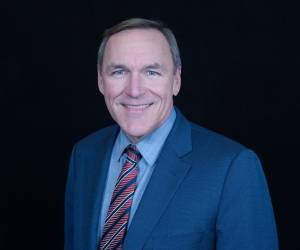 Stanley A. Galanski, President and CEO, The Navigators Group, Inc.
Stanley A. Galanski, President and CEO, The Navigators Group, Inc.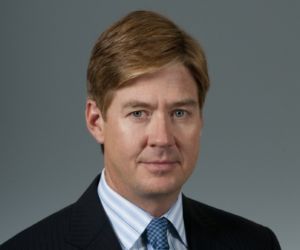 Mark E. Watson III, President and Chief Executive Officer, Argo Group International Holdings, Ltd.
Mark E. Watson III, President and Chief Executive Officer, Argo Group International Holdings, Ltd.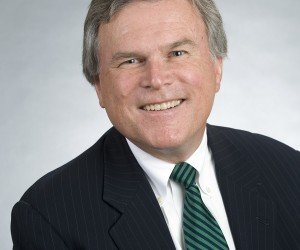 Kevin H. Kelley, Chief Executive Officer, Ironshore Inc.
Kevin H. Kelley, Chief Executive Officer, Ironshore Inc.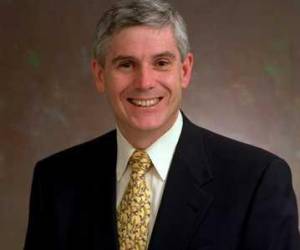 John Wurzler, President, OneBeacon Technology Insurance
John Wurzler, President, OneBeacon Technology Insurance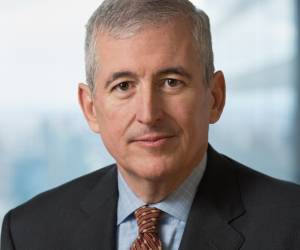 Alan B. Colberg, President and Chief Executive Officer, Assurant, Inc.
Alan B. Colberg, President and Chief Executive Officer, Assurant, Inc. Manny Rios, President and CEO, American Modern Insurance Group
Manny Rios, President and CEO, American Modern Insurance Group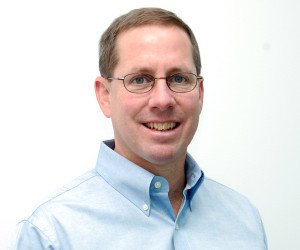 Dave Pratt, General Manager, Usage-Based Insurance, Progressive
Dave Pratt, General Manager, Usage-Based Insurance, Progressive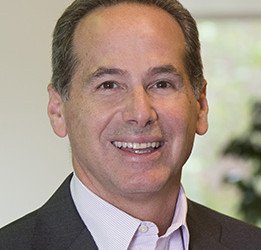 Berto Sciolla, EVP and Manager of North American Treaty Reinsurance,Gen Re
Berto Sciolla, EVP and Manager of North American Treaty Reinsurance,Gen Re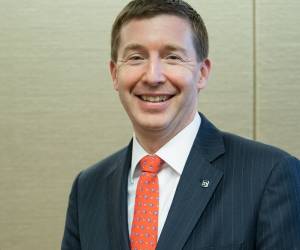 Greg Hendrick, Chief Executive, Insurance, XL Catlin
Greg Hendrick, Chief Executive, Insurance, XL Catlin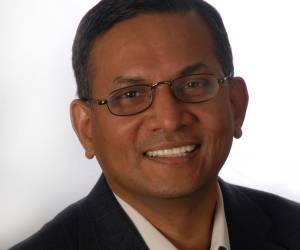 Anand Rao, Principal, PwC U.S. Advisory Practice
Anand Rao, Principal, PwC U.S. Advisory Practice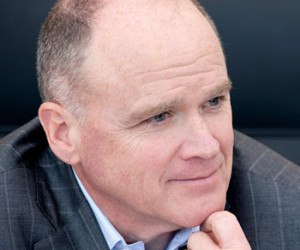 Mike McGavick, Chief Executive Officer, XL Catlin
Mike McGavick, Chief Executive Officer, XL Catlin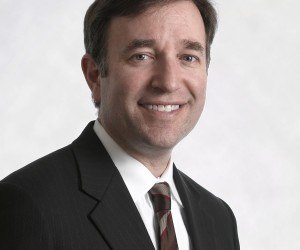 David M. Lightfoot, Managing Director, Head of GC Analytics – Americas, Guy Carpenter
David M. Lightfoot, Managing Director, Head of GC Analytics – Americas, Guy Carpenter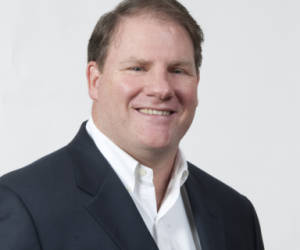 Conan Ward, Chief Executive Officer, Hamilton USA
Conan Ward, Chief Executive Officer, Hamilton USA Ming Lee, Chief Executive Officer, AIR Worldwide
Ming Lee, Chief Executive Officer, AIR Worldwide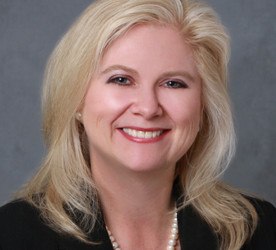 Laura Hay, National Insurance Sector Leader, KPMG LLP
Laura Hay, National Insurance Sector Leader, KPMG LLP John Lupica, Vice Chairman, ACE Group; Chairman, Insurance–North America
John Lupica, Vice Chairman, ACE Group; Chairman, Insurance–North America
 Ming Lee, Chief Executive Officer, AIR Worldwide
Ming Lee, Chief Executive Officer, AIR WorldwideQ1: In your view, what has been the greatest innovation in the P/C insurance industry in recent years? Explain.
Lee (AIR Worldwide): Big data. The exponential growth in the availability of both structured and unstructured data is a game-changer and has begun to pervade all aspects of the industry. Companies today are already ingesting data from many sources and getting value from them. The future offers even more data, such as from social media and aerial pictometry. The Internet of Things will soon provide information as granular as the location and contents of every cargo container on the planet.
We see big data as well in catastrophe risk management. Global companies want to analyze the risk of tens of millions of locations, each of which is captured in ever-increasing detail—and they want to do it in near real time. The catastrophe models themselves are becoming increasingly sophisticated and running at ever-higher resolution, and 100,000-year “stochastic catalogs” or larger are becoming the norm. The ability to handle and make sense of the volume of data available today is necessitating major technological changes at AIR.
Q2: Describe the greatest innovation at your company during your tenure. (It could be a product, process or service.) How did it come about? (Feel free to describe more than one.)
Lee (AIR Worldwide): Without a moment’s hesitation, I would say Touchstone. Touchstone is not a single application; it is actually an open risk management environment that is highly modular, with components both upstream and downstream of the core catastrophe loss analytics. Upstream components include the ability to assess and improve the quality of exposure data, perform account underwriting and exposure management, and assess both cat and noncat loss potential. Downstream components include portfolio management at the business-unit level and the ability to roll up everything to the enterprise level. There are also powerful geospatial tools that enable stakeholders to visualize and analyze their risk from a portfolio view down to a single address.
Ming Lee, AIR Worldwide
Clients have described Touchstone as a revolutionary risk management platform. The first version of Touchstone was released in 2013. We are on the cusp of releasing version 3.0, which will offer access to third-party models and the ability to burst to the cloud during periods of peak activity. Touchstone 3.0 goes even further in leveraging the resources of our parent company Verisk Analytics. Touchstone is engineered to empower today’s risk managers, and it has terrific momentum across all market segments.
Q4: Describe one or more ways in which your company encourages innovation. (Feel free to describe any elements of the culture or process.)
Lee (AIR Worldwide): Innovation has been a mainstay of AIR’s success over the years. We invented the catastrophe modeling industry back in 1987 and have built on that achievement ever since. (See related article, “Karen Clark Moves to Recreate the Cat Modeling Industry She Founded.”) We were the first to introduce numerical weather prediction (NWP) modeling into our windstorm models, and we were the first to couple global climate models with NWP to assess U.S. flood risk at high resolution.
Innovation is also critical in improving our internal processes. Over the years, we’ve identified many ways to be more efficient, delivering our models and products to clients more quickly and with better quality, and to provide better service to our clients.
The importance of innovation at AIR will only continue to grow as our customers’ demand for analytics becomes more urgent and more sophisticated and as the rate of technological change continues to increase. That’s why we launched our Idea Lab, which creates a forum in which employees from across AIR’s global organization can contribute and exchange ideas, vote on what’s good, and collaborate on seeing them to fruition.
We formally structure our investments in innovation in three distinct categories: new products and services, enhancements to existing products and services, and process improvements.
Q5: What is the biggest obstacle to innovation within the insurance industry? Explain. What is your company doing (or what can the industry do) to overcome this obstacle?
Lee (AIR Worldwide): The starting point for effective catastrophe risk management is the collection and transfer of high-quality, detailed global exposure data. While companies in the insurance industry have made progress on improving the quality of their data, the absence of agreed-upon data standards continues to be a hurdle in understanding and managing risk.
AIR has long been a proponent of open standards. We developed UNICEDE—an open data format—in 1993, and we made it available to the industry via a public website, unicede.com. AIR was also the first catastrophe modeling firm to support ACORD’s exposure data standards, and our software platforms were the first to be certified by ACORD for the implementation of those standards. Recently, AIR once again demonstrated our commitment to facilitate accurate and transparent data exchange by publishing Touchstone’s CEDE database schema.
(Editor’s Note: CEDE, or Catastrophe Exposure Data Exchange, is the exposure database format used by Touchstone, AIR’s comprehensive risk management platform that was first released in early 2013.)
Q6: Do you believe the next innovation to impact the P/C insurance industry will come from inside the industry or from an external innovator? Why?
Lee (AIR Worldwide): A lot of it will come from outside the industry. For example, over the past decade, technological advances like high-performance computing are making it possible to achieve previously unattainable levels of performance and scalability in cat modeling. As the Internet of Things continues to mature, insurance companies are ingesting volumes of data about the exposures in their portfolio and developing new underwriting guidelines. Even social media is providing real-time data. Enter big-data solutions. We believe the foundation of analytics going forward must be built on a solid big-data platform that’s capable of meeting the industry’s expanding data needs.
Q11: Outside of providing risk transfer solutions, what are the most likely areas in which insurers can be innovators? Can P/C insurers disrupt other industries or provide noninsurance solutions by applying innovations developed through their core skills in underwriting and risk analysis, settlement negotiations, catastrophe modeling, environmental science or other areas?
Lee (AIR Worldwide): Absolutely. The P/C industry has clearly demonstrated its analytical mindset in underwriting, risk analysis and other areas. When that mindset is directed at risk mitigation, it will certainly help other industries in many ways.
For example, risks associated with cyberspace are growing all around us. AIR is working in partnership with insurers to develop risk assessment methodologies for cyber risk, which I also hope will drive best practices to mitigate the risk.
Another example is supply chain—we are developing analytical approaches to better assess and protect from supply chain disruptions. This can help manufacturers in many industries, as well as help insurers better understand business interruption risks.
Taking a different angle, I think catastrophe modelers can bring enormous value and innovation to tackling some of the world’s other pressing problems, such as helping communities become more resilient from natural disasters.
For example, AIR is a founding member of the Global Earthquake Model (GEM) project. The goal is to develop the first global open-source model for seismic risk assessment, thereby delivering the expertise of the global scientific community to nations that would otherwise be neglected.
An even more immediate example is an outcome of our work with the World Bank and the Asia Development Bank. Here, AIR recently played a critical role in Vanuatu’s recovery after Category 5 Cyclone Pam made a direct hit on the island in March, triggering a payout under the Pacific Catastrophe Risk Assessment and Financing Initiative (PCRAFI). AIR was the calculation agent for the transaction.
Personally, I am very honored to have been recently elected as a member of the board of trustees of Geohazards International, whose mission is to “end preventable death and suffering from natural disasters” in the world’s communities most at-risk…through preparedness and mitigation.”
So there is enormous opportunity for catastrophe modelers to make a genuine difference on the ground, and I am very proud that AIR is a part of that.
Related Video: AIR’s New Touchstone Cat Model a ‘Major Advance’ Says CEO (2013 Interview)
Related Articles:
We launched our Idea Lab, which creates a forum in which employees from across AIR’s global organization can contribute and exchange ideas, vote on what’s good and collaborate on seeing them to fruition.
Read more Innovation Insights by Person:
 Stanley A. Galanski, President and CEO, The Navigators Group, Inc.
Stanley A. Galanski, President and CEO, The Navigators Group, Inc. Mark E. Watson III, President and Chief Executive Officer, Argo Group International Holdings, Ltd.
Mark E. Watson III, President and Chief Executive Officer, Argo Group International Holdings, Ltd. Kevin H. Kelley, Chief Executive Officer, Ironshore Inc.
Kevin H. Kelley, Chief Executive Officer, Ironshore Inc. John Wurzler, President, OneBeacon Technology Insurance
John Wurzler, President, OneBeacon Technology Insurance Alan B. Colberg, President and Chief Executive Officer, Assurant, Inc.
Alan B. Colberg, President and Chief Executive Officer, Assurant, Inc. Manny Rios, President and CEO, American Modern Insurance Group
Manny Rios, President and CEO, American Modern Insurance Group Dave Pratt, General Manager, Usage-Based Insurance, Progressive
Dave Pratt, General Manager, Usage-Based Insurance, Progressive Berto Sciolla, EVP and Manager of North American Treaty Reinsurance,Gen Re
Berto Sciolla, EVP and Manager of North American Treaty Reinsurance,Gen Re Greg Hendrick, Chief Executive, Insurance, XL Catlin
Greg Hendrick, Chief Executive, Insurance, XL Catlin Anand Rao, Principal, PwC U.S. Advisory Practice
Anand Rao, Principal, PwC U.S. Advisory Practice Mike McGavick, Chief Executive Officer, XL Catlin
Mike McGavick, Chief Executive Officer, XL Catlin David M. Lightfoot, Managing Director, Head of GC Analytics – Americas, Guy Carpenter
David M. Lightfoot, Managing Director, Head of GC Analytics – Americas, Guy Carpenter Conan Ward, Chief Executive Officer, Hamilton USA
Conan Ward, Chief Executive Officer, Hamilton USA Ming Lee, Chief Executive Officer, AIR Worldwide
Ming Lee, Chief Executive Officer, AIR Worldwide Laura Hay, National Insurance Sector Leader, KPMG LLP
Laura Hay, National Insurance Sector Leader, KPMG LLP John Lupica, Vice Chairman, ACE Group; Chairman, Insurance–North America
John Lupica, Vice Chairman, ACE Group; Chairman, Insurance–North America
Read other innovator’s response by question:
- Q1: The greatest innovation in the P/C insurance industry
- Q2: Describe the greatest innovation at your company
- Q3: Innovation or innovator outside the insurance industry
- Q4: How your company encourages innovation
- Q5: The biggest obstacle to innovation within the insurance industry?
- Q6: The next innovation to impact the P/C insurance industry
- Q7: Your role in leading innovation.
- Q8: Best book you have read about innovation
- Q9: Describe a failed initiative at your company
- Q10: Collaborating with market competitors
- Q11: Can P/C insurers disrupt other industries?
Get all 16 interview neatly packaged in a single PDF download. Explore ideas by personality and by question. More than 60 pages of content.





















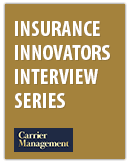
 Roof Repair and Replacement Costs Up Nearly 30% Since 2022: Verisk
Roof Repair and Replacement Costs Up Nearly 30% Since 2022: Verisk  The Workplace Is Changing; So Are the Risks for Employment Discrimination Claims
The Workplace Is Changing; So Are the Risks for Employment Discrimination Claims  The Future of the Insurance Customer Experience Is Unity, Personalization
The Future of the Insurance Customer Experience Is Unity, Personalization  Lemonade: 700K Customers on the Car Waitlist
Lemonade: 700K Customers on the Car Waitlist 



